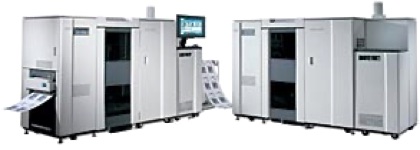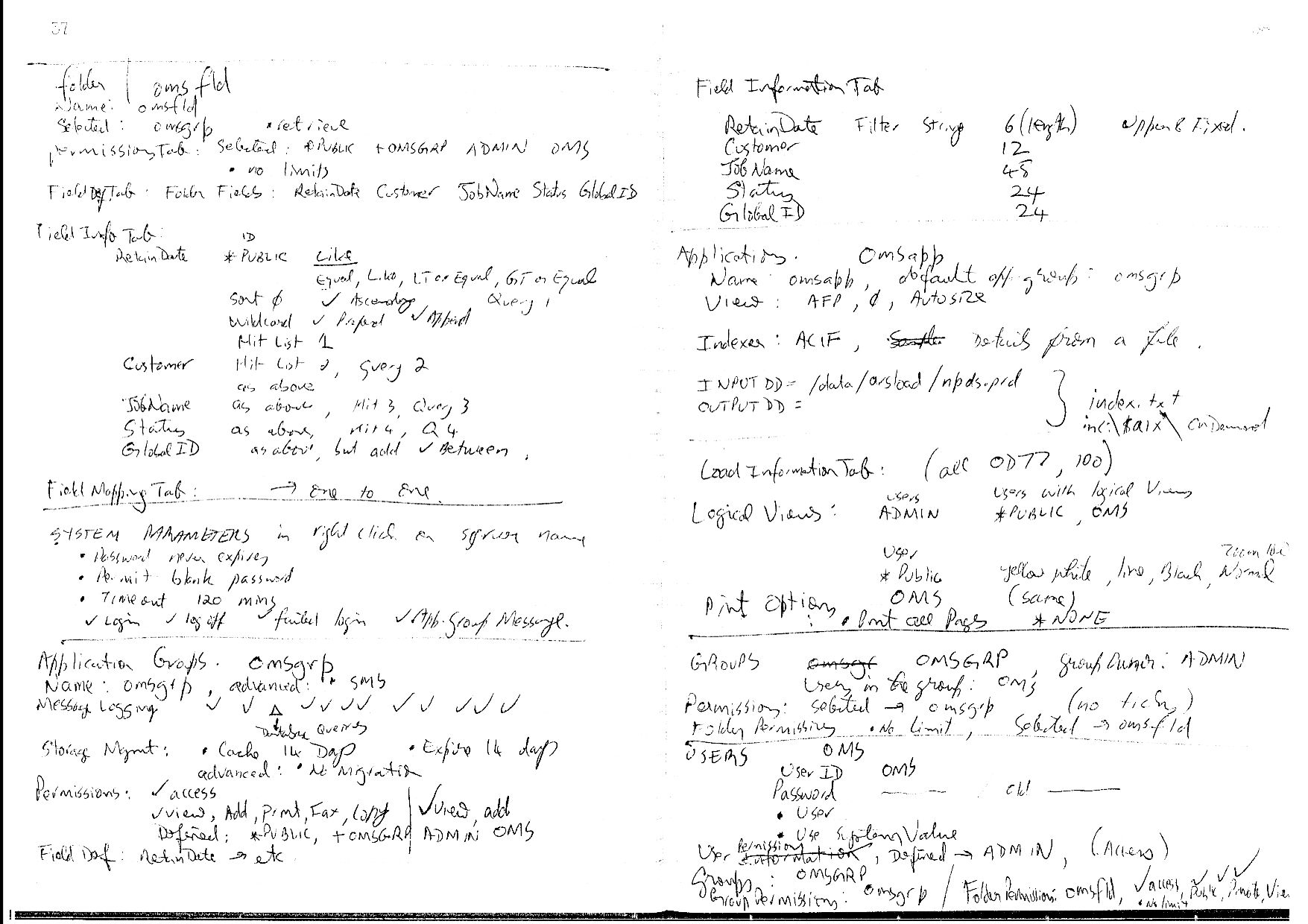Some History
– I worked with IBM Printing Systems Division in Australia from June 1996 to April 2001. Previously I was with an IBM RS/6000 partner.
In that prior job, I was underpaid on Brisbane wages making living in Sydney increasingly untenable. I had to go in one jump from $250 per week rent to $360. I actually cried. That $250 today (2 bedrooms, 2 bathrooms) would be $550 to $650. The CEO said I was making a bad mistake that would ruin my IT career. It never did, only supporting my IT capabilities, bringing me in touch with multiple hardware and software platforms, many people and overseas travel, including contact with good people in Boulder. A large part of my time was focusing on the IBM print architecture, and problem management. I also did some AIX technical support, and some sales support around AIX systems. This period of time was prior to moving to IBM Global Services.
Being a business, travel was based on use to the business. It was a perspective that took away an essential aspect of the care we should have for others regardless of the vehicle that is driving the occupants. I learnt this in a revealing way from a conversation I had with a manager in USA. Meanwhile, back home, I realised no matter how much or how hard we worked, the economic system was designed to ensure we could not save much money at all. I had to aim to move into higher paying work, which is another line of discussion.
When I left IBM I recall someone saying from their experience, in great relief, there really was life after IBM. One manager said I was not loyal to IBM, but none of that fitted to reality. I was deeply loyal to the job and people around me. It was IBM staff who openly said IBM no longer had an environment that supported loyalty. It had gone out the window. I asked at a Global Services workshop to show me the proof of loyalty, but they could find nothing to support the claims. Yet, I could spot an IBMer from the way they conducted themselves in public. I was glad to be in IBM and learnt so much.
I recall a group of people sitting down with me, literally in tears as they were losing their jobs. Jobs were being lost across the country at various times, but there was no stability around it. It was felt as random, at any time. I was in the ANZ offices in Melbourne when 1,000 people lost their jobs. They remained entirely professional during that crisis, of great personal credit to them. Towards the end of my time in IBM Australia, before moving to the print and mail division in Global Services, (Lend Lease) which later came under the IBM Australia banner, more rounds of people lost their jobs. I did not know until later that I was retained in employment due to a decision based around who I was as a person, not just technical value. To me, that is a personal award I deeply appreciate.
I won a top 4% award with IBM, for the field I worked in. Printing was huge in USA. It involves a lot, including mailing, archiving systems, online statements and payments. The number of people and the conventions were gigantic, even boasting television broadcasts throughout the day! The thing is, they did not check the trophy wording. They etched into the glass that I was a salesman, instead of technical support. Years later I decided not to keep the trophy as it was wrong. But I did experience a business class flight to Hawaii. Such awards are born of a corporate culture. As far as I can tell, this corporate pattern is to further induct. It is not really that you did a good job and deserve reward. I had already been told that. And, these awards involved tax deductions. I would much rather have been awarded something I needed.
At that time there was a lot going on from a personal point of view. Amongst all that I made a highly significant personal decision to someone else’s benefit, that years down the track would have been better if I had not made that decision. But the fact we can make decisions based on good conscience and morale is important even when we do not know what the future will hold. Sometimes we may also make decisions based not on what we want, but on what entirely benefits another person. That is an interesting experience.
I did my best to understand printing, and to hold responsibility. I learnt a lot from my managers over the years. Things like ownership, initiative, planning and so much more. I had access to resources and people that most in the IT workforce do not have. When I moved out of IBM I felt that absence strongly, including the best practices and technical documentation I was used to.
I recall once, I sold my air conditioning unit. I realised afterwards how hard the couple had worked to save money for the unit. This struck me deeply. I too know financial struggle and crisis. I even know hunger and how terrible that is. Once I was unemployed for a year and one business manager said how it was a person’s fault if they were unemployed. This is no longer just ignorance when someone says this. However, these situations of the past always included some level of fear around job and economic uncertainty. We need true compassion for those in our immediate sphere. There are times I give things away rather than sell them. I would urge people to do this. I am sorry looking back I was not at that point in my life where I could have done more for other people. IBM appeared to give a sense of security and being in a special place, but while it offered much, it was by no means that sanctuary. For some I may venture based on a discussion with a GP, it even meant heart attacks. I can only encourage people in their professions to follow after what they are good at, what they like.
Interestingly, throughout my career, at the time I left various jobs, something came up afterwards to reassure myself it was best to leave. For example, a division closes down soon after. This has been a common occurrence.
IBM Printing Background
Us normal folks only ever see PC’s and desktop printers, or printers at Office Works. Prior to e-mail and online services, all business communications to the public was done via hard copy print – ink on paper.
Corporates also largely used mainframes and midrange systems like the AS/400 computers. The desktop PCL printing language was hopeless, and later on PostScript had its own issues. So, Enterprise Printing was invented. This was two pronged. It was the invention of huge printers that could use rotating drums and static electricity to pump out thousands of bank or utility statements for the entire country, with its own proprietary property – and so we saw IBM and Xerox as the main contenders. IBM developed the Advanced Function Printing architecture, and that included how information was laid out on a page, (it was very complex, and nothing like what we are used to) and how a print machine could ensure every page was printed without error. This meant a large machine could back step and re-print damaged documents while it was doing the print run itself. Xerox developed its own method as well.
When your bank statements were processed, they were carried out on a mainframe. There was nothing user-friendly about that environment. It is interesting that I had involvement on those corporate systems.
The other prong was matrix or line printing. That is, dots and hammers. This is significant because some of us may recall the look and feel of our earliest bank and telephone statements as we saw in the 1970’s. They were printed with line or matrix printers. Our printing history revolves around diverse types of print languages, not just IBM and Xerox. This involved special characters and scripting, which later as I understand, influenced development of the Internet. Everything has an influence somewhere along the way.
Enterprise printing had to ensure no mistakes with large volumes of print in a digital world, prior to the Internet. Over time, the difficulties lessened, and eventually printing could be via postscript. The large print volumes decreased. This was a complex world. The key for IBM was hardware as a cash cow. It was known and it was said. That declined sharply.
Over time we transitioned from “legacy” systems. For instance, NAB Bank transitioned their mainframe statement’s data to an Oracle database architecture. Behind the scenes were people with highly specialised knowledge about the mainframes, and as time went on, that knowledge was visibly decreasing. We would also see transitions from old style SNA and Coax cabling and the like to Ethernet cables. These were major thing to deal with at one point in time. At a simpler level you may recall use of RS232 and Parallel cables to PC printers. I do anyway.
Over time, revenue had to shift to other areas. While all this print technology was developed for Enterprise, a major thing took place. IBM had some amazing people, just a small number, who not only developed the printing architecture, hardware and software, for use across various systems, but archiving. It was call On Demand. I sat in on a training course with one of the developers in England. The database to manage large quantities of data had to be ingeniously devised, and it was. The structure would allow us today to access either the old style matrix printer data, or full blown bank statement images within seconds online no matter how many millions of people were accessing data. IBM Printing Systems handed over this technology at some point to the AIX (Unix) branch. It becomes more obvious how IBM staff were involved in patents and developments for things like web server load balancing. One of our younger local staff in Sydney played a significant role in this.
When you design a Microsoft Word or Powerpoint document, it is nothing at all in comparison to what went on in the Enterprise world.
As printing devolved, revenue shifted to things like toner cartridges, corporate software packages, some attempts at e-mail, On Demand archival, and so on. Just as Australia Post had to shift from revenue based on letters (which contained millions of bank statements) to parcel online services. We have to remember, I think, that all such things are around communications. That opens up large scope for the country, and possibilities to think outside the box.
In terms of history, there is a lot of material that is not published. Some people here and there know bits and pieces of it. Everyone was basically busy working with the technology to raise revenue and go home with a pay packet. I have seen highly detailed technical documents that no one sees, and today there are only a few people who have the engineering knowledge to fully deal with these systems, and some of that is based on reverse engineering.
In all this, we may humbly remember that the invention of printing was a major step in human development. It has no depletion of complexity in any regard. You are dependent on that history every time you choose a font on your PC screen, when you look at colour profiles, or when you login into your Bank. Out of interest, when IBM invented the golf ball typewriter, the Courier font came into being with which we are familiar today. We have fonts with such “equal spacing” so that matrix or digital/toner printers can line up the columns of your bank statement on paper. I like telling some people now and then that when you use an Apple computer, you have a dependency on the Unix operating system that was released in 1969. I can prove it. The interrupt key sequence today is still Control-c, and you copy and paste with Command-c and Command-v. When you view the format on a web page you know it had to come from somewhere. How such layouts were developed so they could be both seen on a screen, and printed on a piece of paper were always intertwined.
Of course, all of this is called digital print, which is different to the giants of newspaper press printers. I unfortunately do not know about the connections between these two technologies, but there would be connection.
As said, there were several print technologies around. The big players were IBM and Xerox. Xerox targeted Australia early with its sales and marketing, so that people were afraid to move away from Xerox at a future time. Some testimony was given that staff felt threatened to move away from Xerox. This was not the case in USA, but it became embedded here. Down the track, Xerox developed software packages for business. My view was that we needed solutions, not components.
Another big player was Océ. Germany was the home for all machines, including printing and mailing machines. Australia is a small country in terms of commerce and population. Once Océ had previously been put in place, there was limited room for IBM printers in Australia. There were a few locations with IBM hardware – Clayton data center in Victoria, Westpac and a few others who owned the hardware. The Westpac ownership was a major factor, but over a very long period of time that phased out. The focus shifted to how IBM sales could make revenue. Approaches were to offer pricing incentive for IBM machines, to focus on colour printing and a transition from Lemark printers to IBM branded desktop printers. It did not go well, especially due to price and machines failures or problems. The push in Australia was to use the IBM AFP print architecture via an IPDS Chip in smaller desktop printers for accurate printing in warehouses. These printers could be dotted around the shop floor beside conveyor belts – that sort of thing. It was all too expensive, and over time other players won out. Hence we see companies like Ricoh, Canon, and HP with their own market segments and audience.
As an example of the problems, when printers were shipped to Australia I had to go to a storage facility, open every carton and replace faulty IPDS chips. Not nice.
When one works for a company, one is younger and adopts the company image and identity in hopefully a healthy way. The problem is, why would HP not be as wonderful to work for as IBM? I was told IBM developed the web, but it was really HP. If we can move away from this “mythology” of who is best, I think it is better. We should be aiming to develop technology in Australia in a way that works with best systems and outcomes, rather than corporate brands or even loyalty, in my view and experience. We just don’t have the right mix at present, and may never have, to remove ourselves from singular market support to multiple supports. We benefit from better freedom.
IBM print has been called Advanced Function Print, or Advanced Function Presentation. The hardware/software for the actual printer is called Intelligent Print Data Stream – IPDS. That is the code and chipset that verified the datastream is not corrupted and can be re-run if things go wrong. Hence, good for a warehouse.
Over time, Adobe Postscript won first place for a number of businesses, especially with use of colour. The system was not as rigid as the prior Enterprise architectures, but it did not fall over. The datastream is large. Another surprise was the introduction of XML into some companies, where data size was basically ridiculous, causing enormous processing time and higher risks. The industry sorts itself out.
Do I have other impressions of IBM? Yes, lots. Is there any way of summarising this? No.
Perhaps I would suggest that web development went ahead and did its own thing. There is no error detection and recovery in JavaScript, or traditional use of variables as we had in Pascal. These are major and impacting problems. What we talked about in IBM was mission critical printing. In other words, how suitable a technology is for scaling up in size and handling larger volumes with robustness. This awareness is important for all projects. Projects have always been best implemented with lots of pre-planning, but expansion for many users or objects. When we understand what technology is doing, we have a better sense of when things will or will not work. Much programming I came across in later years was without that understanding. It is no wonder people therefore did not want to be called programmers. I would have thought it would be an honour to be called a programmer. When we understand the technology we can position it better.
I think it is a trap to be caught up in thinking our technology is the best. It can change over night. For example, use of NFS, Network File Systems went from being the best in our cookbook, to being the worst. Who would have known?
My worst job in my entire career was with ***. I believe people were misused. When I left *** I berated the manager saying it was the worst job I’d ever had. Others did not feel this way, because of the loyalty and identity factor. The reality was that others would tell *** what to do, and as a contract they had to deliver by that rigid agreement. This meant so many hours were allocated for each piece of work. Everything outside of that time frame had to be done on one’s own time without remuneration. Some employees did not mind. I once received an explosive phone call from someone I did not even know, who told me I could not spend time on research, as per my time sheets. Everything had to be productive. There were other dehumanising aspects of the job in my view. When I left I received a raise of about $50,000. A number of young people today want good environments and managers. I know, as far as I can, the best and the worst. I recall a behind the scenes conversation where *** would laugh at who they were going to sack, and how they would ensure transitions did not break down as people were sacked.
I once left my locker at my desk unlocked – they were not self-locking. My laptop was in it. We had to chain our laptops to our desks each day. This is utter stupidity. But that is how they did it. I was reprimanded. Personally I would not agree to the proposed punishment, and the style at hand went against everything I knew and stood for. I felt I had to ignore this and just get on with my work, but the outcome of course was no regard for the company. I saw people become grey in colour as they lost their way and love for others. I don’t hold regrets, but I know what I observed.
I think mentoring and good team support is they key to day-to-day workforce success. Our best environments support the best people, and from thence we learn. We would not know otherwise, and in that lack, some realise they have to leave a job to find better. We are not stupid. If we are aware, we know what is going on.
Extract from a Marketing Brochure
Communicating the essentials has never been so easy
Helping you better support and service your customers
In order to ensure you are able to best support and service your customers it is essential that you receive the right solution for your individual requirements.We deliver this through: …..
The future is on-demand
Responsive, customer-orientated, dynamic, faster speed-to-market with the ability to manage unpredictable business fluctuations. All the characteristics of an on-demand business. All the characteristics an organisation will need to adopt to survive the 21st century.
*** provide customers with a roadmap to the on-demand future and ensure that whatever decisions they make today, they will be adequately prepared for the decisions they need to make tomorrow.

I find broad marketing content like this common in Enterprise, but it has no appeal for me any more. I think people are tired of the demands to read what everyone has to say. They just need some hard facts, not rhetoric.
I have reviewed the original copyright literature and sales materials for AFP Printing and kind of view it as a bygone era even though it is still in production. It represents a period in my life where I loved working with the technology and people.



